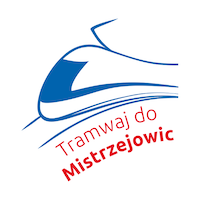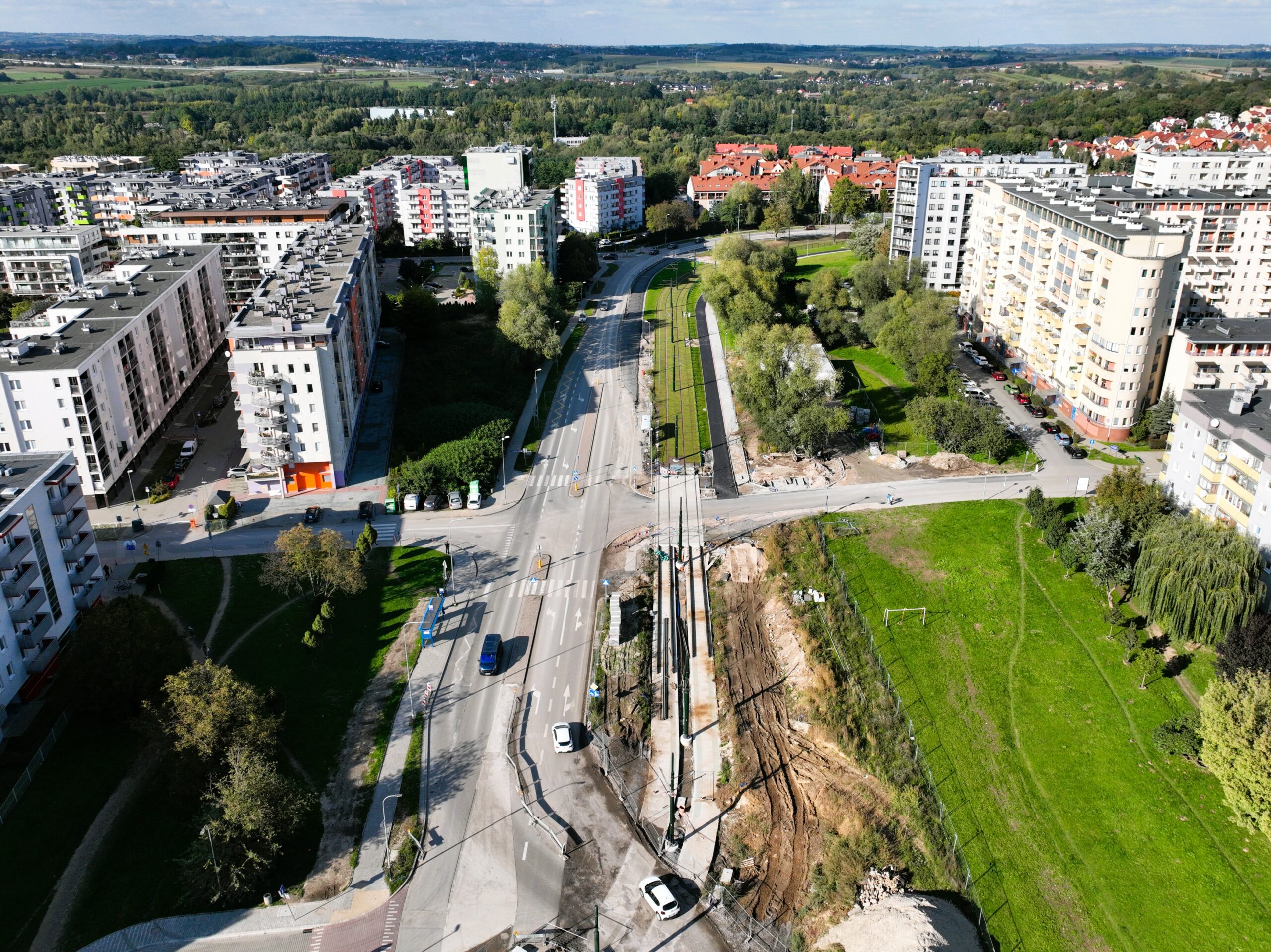The tram to Mistrzejowice is gaining colours!
We have already laid 6,000 square meters of sedum mats out of the planned 15,000. This is an important milestone for our project – the solution will bring many benefits both for the natural environment and for residents. Thanks to the sedum, it will be quieter, more aesthetically pleasing, and more ecological!
The aesthetic value of green tram tracks is undeniable – as a natural element of urban space, they look far more attractive than concrete surfaces. Sedums, plants of the genus Sedum, are particularly pleasing to the eye. The effect is visible immediately, as the mats are unrolled like a green carpet – without the need for planting. In addition, they shimmer with many colours thanks to the flowering leaves – from green, through golden, to red and orange in the autumn. The colour palette of a sedum-covered track thus changes with every season.
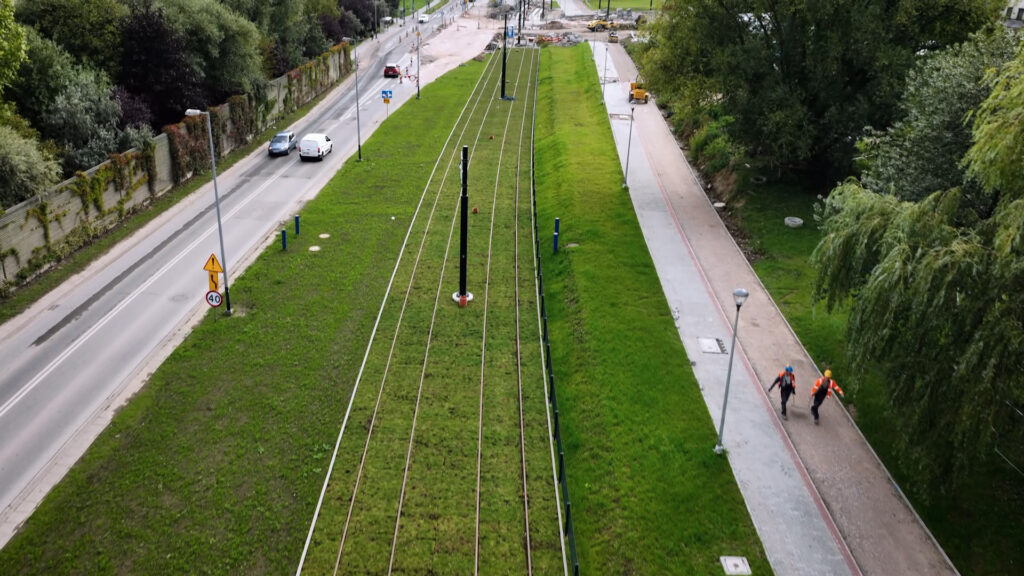
Aesthetics aren’t everything. A tram track covered with sedum also has numerous ecological and social benefits. Instead of a loud, dusty track made of concrete or gravel, sedum reduces noise, dust, and vibrations caused by passing trams. It acts as a natural sound absorber – studies show it can reduce tram noise by 2–4 dB*.
Sedum mats also absorb rainwater – they can retain up to 50% of precipitation**. This relieves the city’s drainage system (extending its lifespan and lowering maintenance costs) and minimizes the effects of heavy rainfall. The retained water is then released gradually, reducing the risk of flooding urban infrastructure. Additionally, the mats capture some pollutants, dust, and heavy metals, improving air quality for residents living near the tracks.
Unlike concrete tracks, sedum does not heat up to such high temperatures. This helps lower the temperature around the tracks, which is especially important in dense urban areas during summer. In turn, this helps reduce the so-called urban heat island effect, where built-up areas heat up significantly more than surrounding regions.
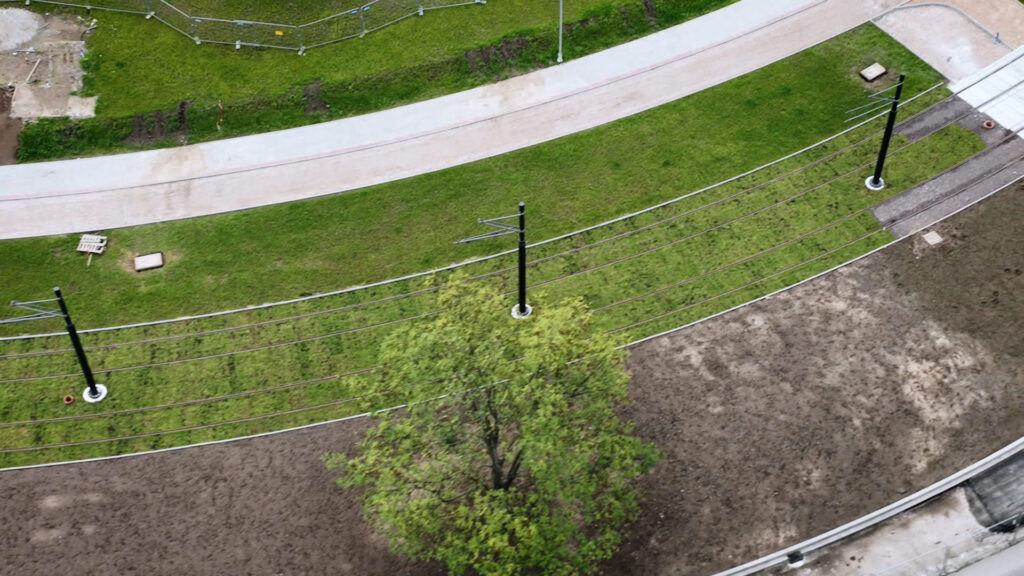
In Kraków, green tram tracks can already be seen on many sections, for example between Rondo Grzegórzeckie and Mały Płaszów, or between Grota-Roweckiego and the Czerwone Maki depot. Compared to the grass used in those areas, sedum offers additional benefits. It is much easier to maintain – it doesn’t require mowing or watering. Only occasional cleaning and fertilizing are needed. This solution therefore helps the city save both on maintenance costs and on the natural resources needed to care for greenery.
The tram to Mistrzejowice is an investment designed with the environment in mind – it aims not only to provide faster access to the city center, but also to bring more greenery into urban space. This project improves public transport while contributing to Kraków’s sustainable development. Together, we are creating a city where public transport goes hand in hand with care for the landscape and nature.
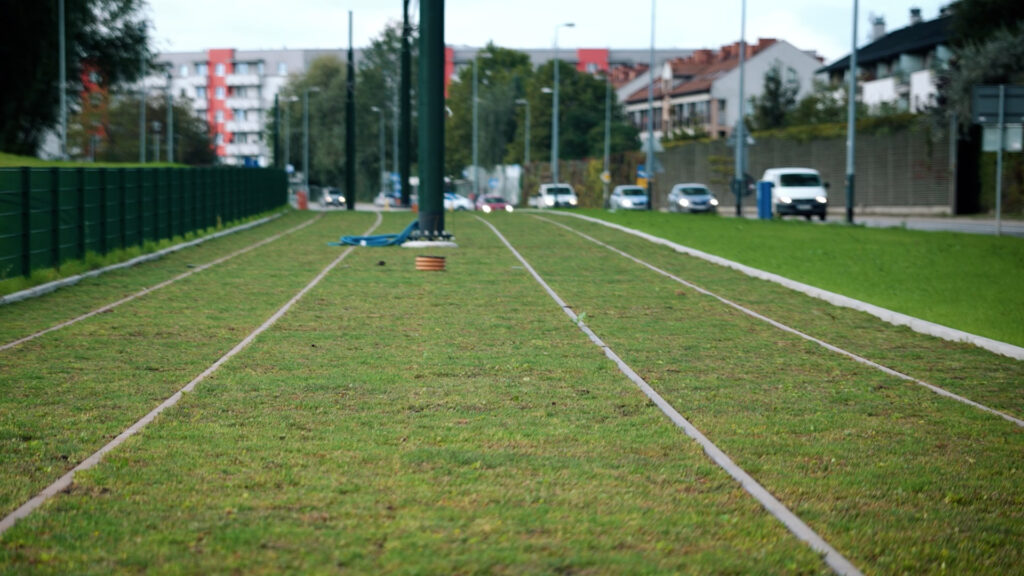
*The_influence_of_track_design_on_rolling_noise_from_trams_Final.pdf
